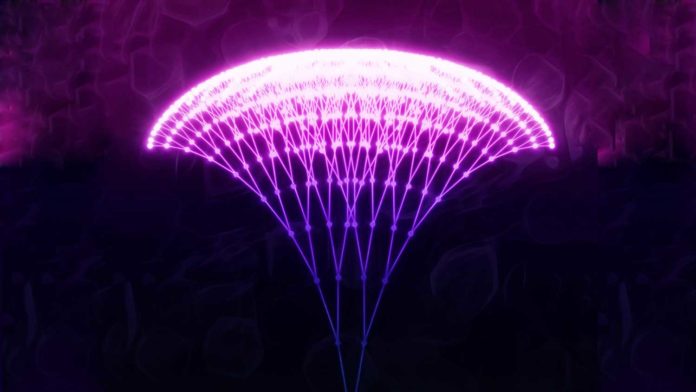In the Avalanching process, a series of small perturbations triggers a cascade of events. The process takes place in various phenomena beyond snow slides, including the popping of champagne bubbles, nuclear explosions, lasing, neuronal networking, and even financial crises.
Avalanching is an extreme example of a nonlinear process, in which a change in input or excitation leads to a disproportionate — often disproportionately large — change in the output signal. Large volumes of material are usually required for the efficient generation of nonlinear optical signals, and this had also been the case for photon avalanching until now.
In optics, photon avalanching is the process where the absorption within a single photon’s crystal results in the emission of many.
Scientists at Columbia Engineering develop the first nanomaterial that demonstrates “photon avalanching”. This is the first time that avalanching behavior seen in nanomaterials.
The discovery opens up a host of sought-after applications, from real-time superresolution optical microscopy, precise temperature and environmental sensing, and infrared light detection, to optical analog-to-digital conversion and quantum sensing.
Scientists were examining nanoparticles at the single-nanoparticle level. They realized that avalanching behavior could occur in nanomaterials.
James Schuck, associate professor of mechanical engineering, said, “This exquisite sensitivity could be unbelievably extraordinary. For example, suppose we could detect changes in our surrounding chemical factors, similar to varieties in or the actual presence of molecular species. We may even have the option to identify Covid and different illnesses.”
Scientists used photon avalanching in specialized lasers, where the photon absorption sets off a chain reaction of optical events that ultimately lead to efficient lasing.
The absorption of just a single photon leads to a large number of emitted photons. It also shows a surprising property: the emitted photons are “upconverted,” each higher in energy (bluer in color) than the single absorbed photon.
By implementing some key nanoparticle design innovations such as select lanthanide contents and species, scientists could synthesize novel 20nm nanocrystals that demonstrate photon avalanching and its extreme nonlinearity.
The team observed that the nonlinear optical response in these avalanching nanoparticles scales as the 26th power of the incident light intensity — a 10% change in incident light causes more than a 1000% change in the emitted light. This nonlinearity far exceeds responses reported previously in lanthanide nanocrystals. This extraordinary response means the avalanching nanoparticles (ANPs) show great promise as sensors since a small change in the local environment can lead to the particles emitting 100-10,000 times more brightly.
Scientists also found that this giant nonlinear response in ANPs enables deeply sub-wavelength optical imaging using only simple scanning confocal microscopy.
Schuck explained, “The ANPs allow us to beat the resolution diffraction limit for optical microscopy by a significant margin, and they do it essentially for free, due to their steeply nonlinear behavior.”
The study’s lead author Changhwan Lee, who is a Ph.D. student in Schuck’s group, adds, “The extreme nonlinearity in a single ANP transforms a conventional confocal microscope into the newest superresolution imaging system.”
Schuck said, “We are very excited about our findings. We expect them to lead to all kinds of revolutionary new applications in sensing, imaging, and light detection. They may also prove critical in future optical information processing chips, with ANPs providing the amplifier-like response and small spatial footprint typical of a single transistor in an electronics circuit.”
Journal Reference:
- Changhwan Lee et al. Giant nonlinear optical responses from photon avalanching nanoparticles. DOI: 10.1038/s41586-020-03092-9
